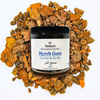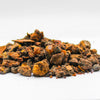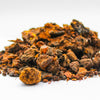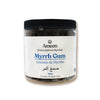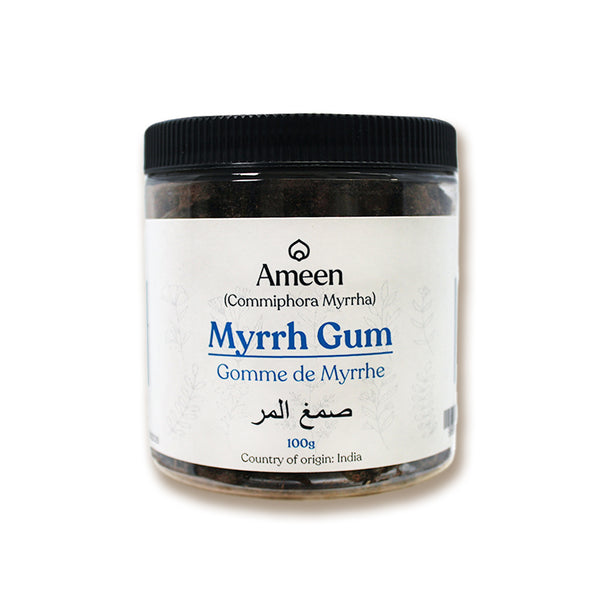Myrrh Gum, derived from the Commiphora myrrha tree, is a highly prized resin known for its rich aroma, deep cultural roots, and versatile applications. Traditionally used in incense, perfumery, and herbal preparations, this golden-brown resin has been valued for centuries across various civilizations, from ancient Egypt to traditional Chinese and Ayurvedic practices.
Aromatic Profile & Traditional Uses
- Warm, Earthy, & Slightly Bitter: A distinct fragrance with smoky, balsamic undertones.
- Used in Incense & Perfumes: A primary ingredient in sacred rituals, spiritual ceremonies, and meditation blends.
- Blends Well with Frankincense & Spices: Complements cinnamon, clove, and sandalwood in fragrant mixtures.
- Essential in Traditional Herbal Practices: Commonly prepared as tinctures, infused oils, or pastes.
- Used in Aromatherapy & Skincare: Incorporated into natural soaps, balms, and massage oils.
Cultural & Historical Significance
- Ancient Egyptian & Middle Eastern Heritage: Myrrh was offered to gods and royalty, often used in temple rituals and embalming processes.
- Prominent in Ayurveda & Traditional Chinese Medicine: Valued for its aromatic and topical applications.
- Referenced in Religious Texts: Featured in Christianity, Islam, and other historical texts.
- Highly Prized in Ancient Trade: Once worth its weight in gold, Myrrh was a key commodity in spice routes and ancient commerce.
How to Use Myrrh Gum
- Burn as Incense: Releases a rich, smoky aroma ideal for relaxation and spiritual practices.
- Infuse into Oils & Balms: Used in massage oils and natural cosmetics.
- Blend into Herbal Preparations: Often included in traditional remedies and tinctures.
- Create Natural Perfumery Blends: Pairs beautifully with Frankincense, Sandalwood, and Vanilla.
Botanical & Cultural Significance
Botanical Name: Commiphora myrrha
Common Names:
- English: Myrrh, Myrrh Gum, Arabian Myrrh
- Sanskrit: बोल (Bola), गुग्गुलु (Guggulu Myrrha)
- Hindi: गंधरस (Gandharas), हीरा बहेड़ा (Heera Baheda)
- Urdu: مر (Mur), گوند مہر (Gond Mehr)
- Tamil: மிர் (Mir), குளு குளு (Kulu Kulu)
- Telugu: గంధరసం (Gandharasam), మిర్రా గమ్ (Mirra Gam)
- Malayalam: മിർ (Mir), ഗന്ധരസം (Gandharasam)
- Kannada: ಮಿರ್ (Mir), ಗಂಧ ರಸ (Gandha Rasa)
- Marathi: मिर्र (Mirr), गंधरास (Gandharas)
- Gujarati: મીર (Mir), ગંધરાસ (Gandharas)
- Bengali: মির (Mir), গন্ধরস (Gandharas)
- Punjabi: ਮਿਰ (Mir), ਗੰਧਰਸ (Gandharas)
- Malay/Indonesian: Getah Myrrh, Kemenyan Arab
- Thai: กำยาน (Kamyan), มดยอบ (Motyop)
- Chinese: 没药 (Mò yào)
- French: Myrrhe
- Spanish: Mirra
- German: Myrrhe
- Russian: Мирра (Mirra)

